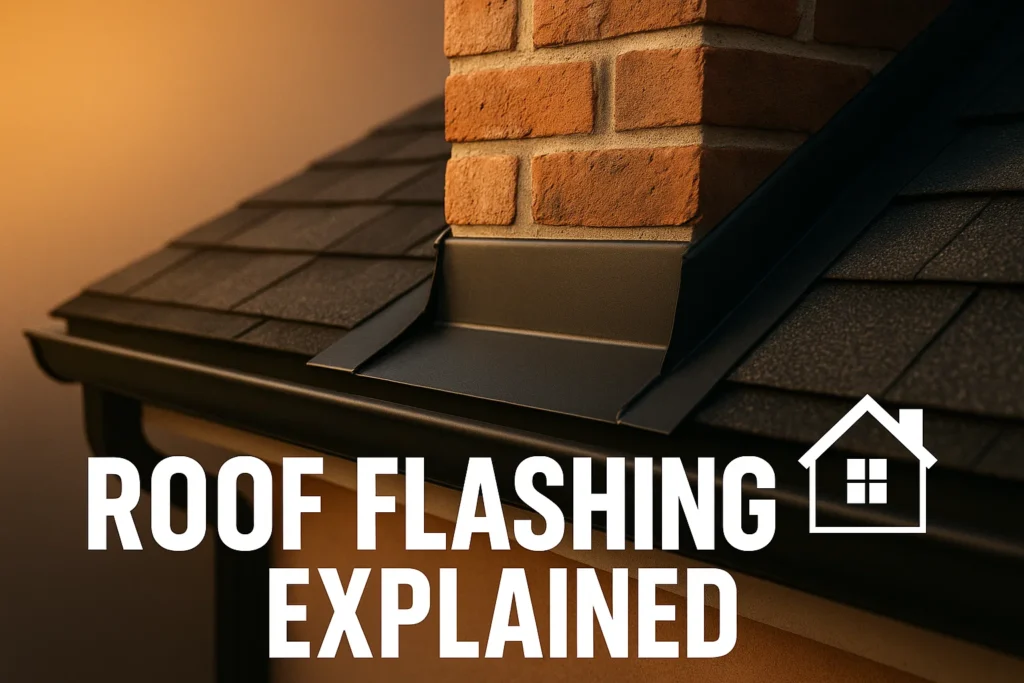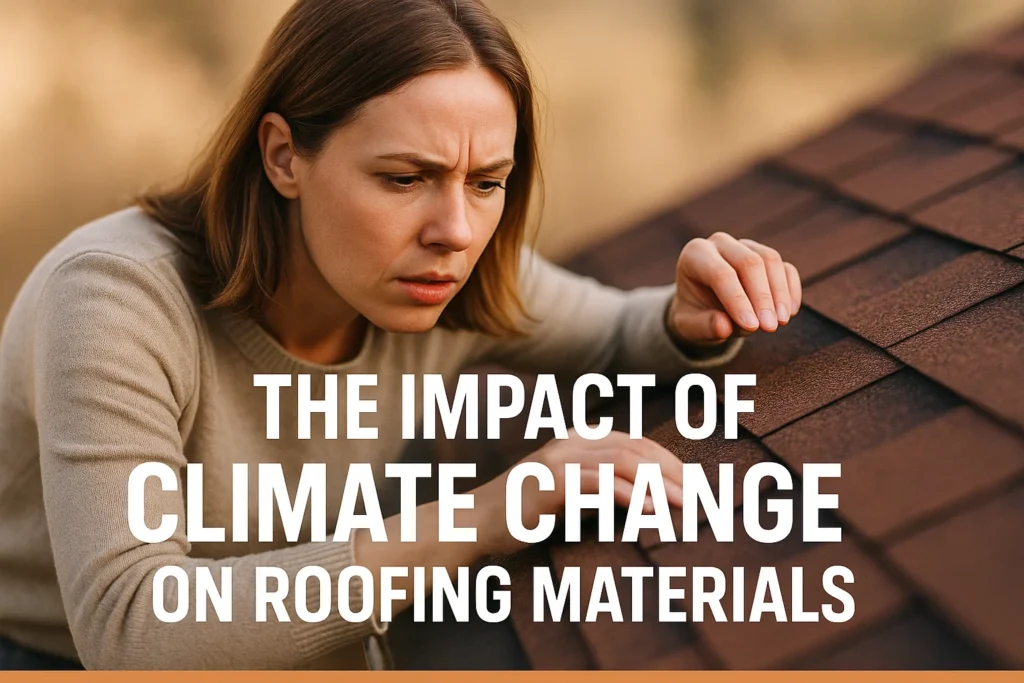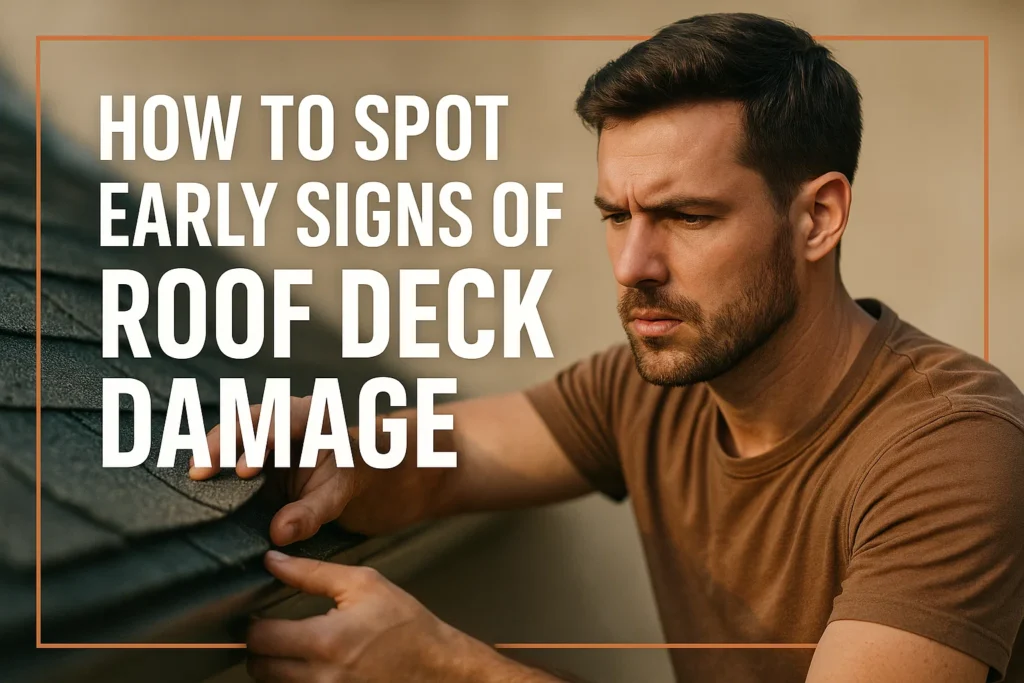Roofing flashing is a protective layer of waterproof material often galvanized steel, aluminum, or copper installed by roofing professionals to direct water away from susceptible areas of your roof (think where the roof meets a wall, chimney, or valley). It’s main job is to keep water out of your home since water can lead to mold, wood rot and even structural damage. Without flashing, rain can penetrate the most solidly built roofs, so flashing is a necessity for all houses. This blog covers the explained guide on roof flashing. As a homeowner, contractor, or someone who needs roof repairs or a new roof, you need to know what roof flashing is, why it’s important, and how to install and/or repair it to ensure your home or building stays watertight and in good repair.
What Is Flashing on a Roof?
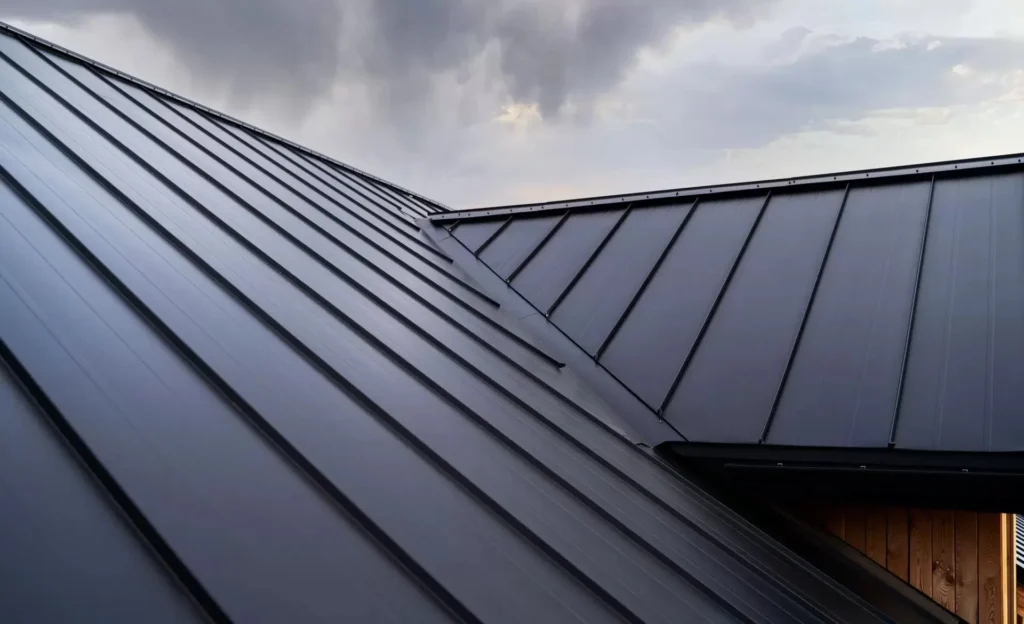
Roof flashing is the specialized material used to protect joints, seams and penetrations on a roof — such as those around chimneys, skylights and vents — to prevent water from seeping into your house structure. Even the best roofing products will fail if the flashing is not properly installed. A few reasons why proper flashing is essential to prevent failures.
- Leaks and the water damage to walls and ceilings
- Mold and mildew growth
- Reduction of the structural integrity of wood framing
- Damaged insulation and costly energy bills
- Risk of costly repairs or worse, deck collapse.
Types of Flashings in Roofing
The Roof you will be covering. Here’s a breakdown:
- Metal Flashing: Metal like galvanized steel, aluminum and copper are the most popular, and the most durable, options because they stand up to water exposure over time.
- Step Flashing: Step flashing is rectangular in shape and bent at a 90-degree angle and is typically used to cover shingles where the roof abuts a vertical wall. That is a way to have the water slash away from the wall to the top of the roof.
- Pipe Flashing: The purpose of pipe flashing is to eliminate leaks where vent pipes extend through a sloped roof.
- Chimney Flashing: Chimney flashing is the aspect that seals a roof to a chimney, and since it does that, we can say that it directs water away from a chimney to roof joint.
Flashing on a House vs. Roof Flashing
| Feature | Roof Flashing | House Flashing |
| Purpose | Protects roof joints from leaks | Seals windows, doors, wall joints |
| Locations | Valleys, chimneys, skylights, roof edges | Windows, doors, wall intersections |
| Design | For sloped roof surfaces | For vertical wall surfaces |
| Materials | Metal, rubber | Metal, vinyl, tape, rubber |
| Challenges | Handles runoff on slopes | Seals gaps in walls and openings |
| Prevents | Roof leaks, rot, mold | Wall leaks, rot, interior water damage |
| Purpose | Protects roof joints from leaks | Seals windows, doors, wall joints |
Common Roof Flashing Problems
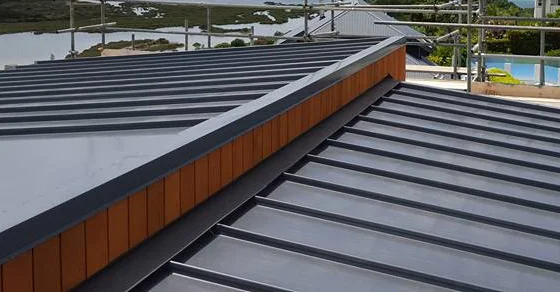
While durable, roof flashing is not indestructible. Avoiding and fixing these issues early could help you prevent expensive repairs and interior water damage.
Damaged or Rusted Metal Flashing
Metal flashing might crack, bend, or even rust, particularly if it’s been subjected to severe weather and/or composed of lesser-quality grade materials. When flashing becomes damaged, it is no longer able to protect against leaks and needs to be replaced in order to prevent water from entering.
Improper Flashing Instalation
One of the top causes of leaks into the roof is poorly mounted flashing. Indicators can be that the flashing is too loose, or there are gaps (or items not aligned) with components of the roof itself. Inferior installation is generally not sufficient for long-term performance.
Flashing Leaks and Water Damage
Leaks frequently occur where flashing is absent, loose or deteriorated. Roof deck leaking Water infiltration, decks can lead to roof rot or surface deck damage Water infiltration can occur in many areas of the roof deck and cause damage to the deck, whether it be rot, mold or in the worst case scenario, total structural deck failure, if not remedied.
Repair and Replacement of Roof Flashing

If the damage is minimal, you may be able to repair it with roofing cement or sealant, but if there’s widespread corrosion, missing sections, or poor installation, replacement may be necessary. Frequent checking and servicing help to avoid minor problems from developing into big ones.
Equipment And Tools Needed (Flashing A Roof)
Common ConstructionNecessary tools include tinsnips roofing nails or screws for attachment, a hammer, roofing cement or sealant, and appropriate flashing (metal or rubber, depending on job requirements).
Typical Repair Process
- Survey: Examine all of the damage and take live notes on everything that’s touched.
- Take out: Carefully take off damaged flashing and some of the roofing around it if necessary.
- Preparation: Clean up the area well to guarantee good adhesion of the new flashing.
- Install: Install a new metal flashing as per the manufacturer’s and code requirements to be watertight.
- Seal: Use roofing cement or sealant to seal the roof to add strength and conceal exposed fasteners.
Roof Flashing Repair Costs in 2025
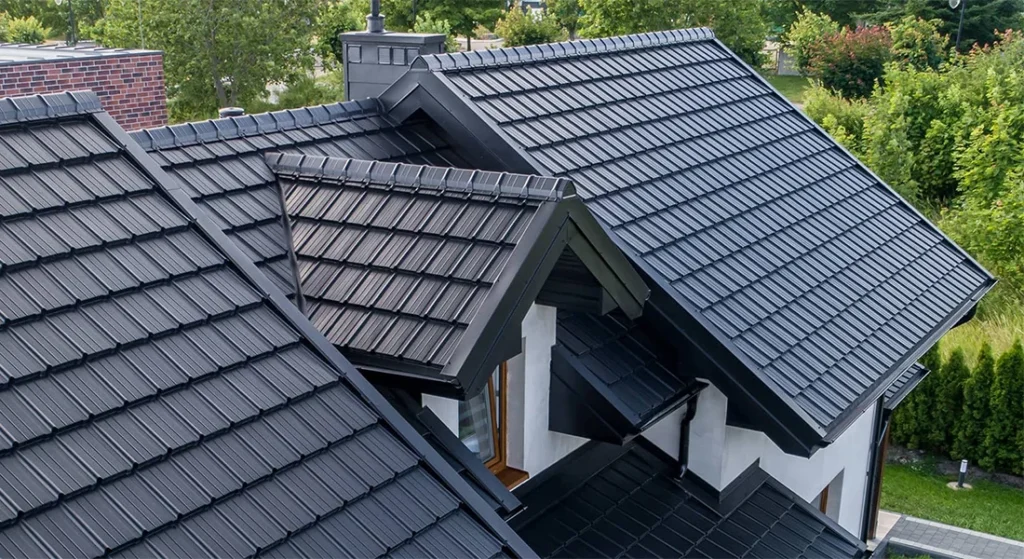
Knowing what it will cost to repair the roof in their homes allows homeowners to plan for regular maintenance expenses.
What is the Cost to Repair Roof Flashing
The average cost to repair flashing on a roof in the U.S. is between $300 and $1,000 in 2025, with the cost determined by the level of damage and complexity of the roof.
How Much Does it Cost to Replace Flashing on a Roof
Full replacement costs can vary widely, from $400 to $2,000 or more, especially if the underlying structures are damaged or if expensive materials such as copper cool the drink.
Is Flashing Damage Insurance Covered?
Flashing repairs may be covered by insurance if the damage is caused by a covered peril, for example when a storm causes damage. However, normal wear and tear or inadequate maintenance usually are not. Be sure to always read through your policy and check with your provider for the specifics.
DIY Flashing Repair vs. Hiring a Pro

Whether you opt for DIY flashing replacement or professional flashing repair depends on the extent of the problem and your level of experience.
Experienced DIYers with the proper equipment and safety gear can complete a few minor repairs, including sealing small gaps and replacing a small section of flashing. Yet botched repair jobs can spiral into larger issues.
If you have significant damage or complicated roofing elements to repair (such as chimneys or valleys), use a professional to ensure the new roof is installed correctly and will protect your home for years to come.
Look for licensed, insured roofers that have experience with flashing repair. Scour ratings, ask for references and shop around for multiple quotes so you get quality and value. Moreover, you can consult our professionals at Faver Roofing for more details and help.
Conclusion:
Roofing flashings are a crucial, often a forgotten component. Flashing, when installed and maintained correctly, will protect your investment from water damage, mold, and structural renovations. The best way to use them can save you time and money down the road. If you do have reasonable peace of mind about your home’s normal maintenance schedule, keeping a regular eye on its roof and getting it fixed when it needs it also pays dividends.
FAQ’s
Roof flashing is a sheet of waterproof material that is configured in such a way that it is installed at any point that protrudes through a roof to provide protection from water and to block the passage of water into a structure.
They are generally made of materials such as galvanized steel, aluminum, copper, or, on flat roofs, rubber or plastic.
Inspect the roof inside to see if it has rust, cracks, holes, missing pieces or is loose and not sealed, or water stains and leaks where the roof intersects with a wall. Predictive inspections can detect problems in advance.
Minor repairs usually costs about $300 to $600 and complete installation can range from $400 to $2,000 or more depending on the scope and materials.
Minor repairs may be do-it-yourself with the right tools and safety precautions, but most repairs or whole-roof work should be done by a roofer for a watertight seal and to meet building codes.
Examine flashing on a regular basis; after any kind of serious weather. Deal with problems in a timely manner to avoid water penetration and subsequent damage.
Yes, you need flashing for any type of roofing system at vulnerable areas to protect against leaks and water damage.


